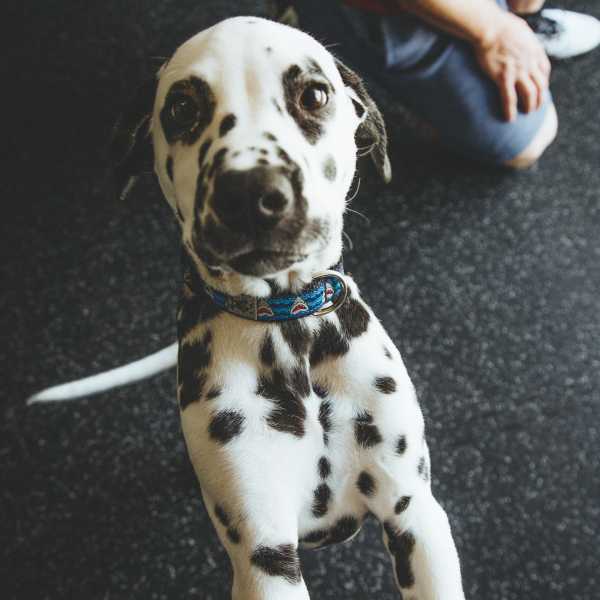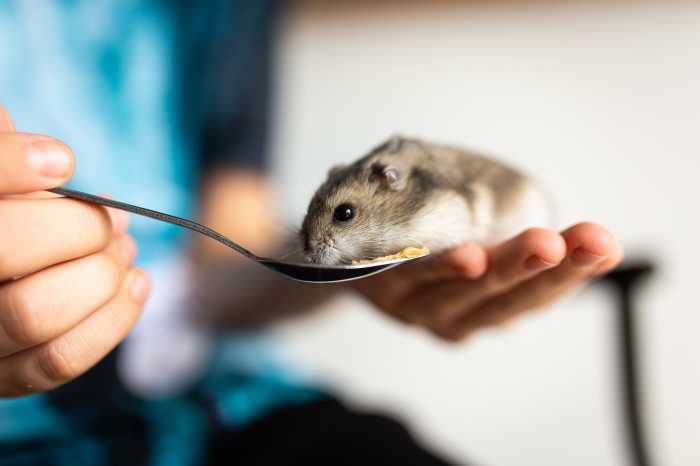
Pets Radar - What can hamsters eat? A vet’s guide to good nutrition
Posted on 8 September, 2021

Image by Cindy Parks from Pixabay
Written by Dr Joanna Woodnutt MRCVS for Pets Radar
You’re not the only one asking, ‘What can hamsters eat?’ After all, there’s plenty of information about dog and cat food, but where do you go to find out what hamsters can eat? Is the food at the pet store enough, or do they need more? What about treats? Our knowledge of hamster nutrition and husbandry has come on a lot in the last few years, and these adorable creatures are finally getting recognition as great pets for adults and children alike. We’re going to look in detail at what hamsters can eat – and some things that should never be fed to your hamster.
What do hamsters eat?
Hamsters are omnivorous, meaning they have a varied diet that’s both plant- and animal-based. Although they’re often mistaken for herbivores (the wild hamster’s diet does primarily consist of seeds and grasses), they need a lot of protein for their size. For wild hamsters, this protein need is filled by eating insects and small animals such as frogs – and even lizards!
What is the best food for hamsters?
Vets and nutritionists tend to recommend feeding your hamster a pelleted diet rather than a muesli-style diet. If you’ve been feeding your hamster muesli, you may have noticed that they eat the same bits first, every day. You may also have noticed that the same bits generally get left behind day after day, too. This causes a problem – although the food is technically well balanced, the hamster can pick out the bits they want and leave the rest resulting in an unbalanced diet. And like children with a bowl of sweets and vegetables, they’re unfortunately likely to pick out the high-calorie and less nutritious things.
The answer to this is to buy pelleted feed for hamsters. It has all the same ingredients as many of the muesli diets, but it has been blended and formed into pellets. Your hamster can no longer accidentally unbalance his diet by picking out the bits he likes the taste of. If your hamster is currently on muesli, you should blend them over to their new diet slowly over a week to avoid gut upset.
8 foods you can feed your hamster
You’re probably thinking that a pelleted diet is boring compared to a muesli one. After all, those squashed peas and corn are so much more interesting and colorful than the pellets. So what can you give your hamster as a treat or snack?
The first rule of hamster treats is that they should make up no more than 5% of their daily diet. Since they only need 8-12 grams of the pelleted diet a day, to avoid obesity you’ll need to restrict their treats to half a gram or less. This is a very small amount- you might find it easier to give them a gram every other day instead.
Whatever you feed, remember to start with a tiny amount to allow their guts to get used to it and avoid causing diarrhea. It’s a good idea to give a different food each day to help your hamster get a range of nutrients.
1) Cruciferous vegetables
Cruciferous vegetables belonging to the brassica family that includes cabbage, cauliflower, kale, Brussel sprouts, and broccoli. They’re high in vitamins, minerals, and fiber, and low in calories. As with all vegetables you can give to hamsters, it’s best to start with a very tiny amount – half a teaspoon is plenty – to avoid diarrhea.
2) Carrots and sweet potatoes
Carrots and sweet potatoes are okay for hamsters to eat, but you should be aware that they’re quite high in sugar. On the plus side, they’re hard and may help to wear down their teeth, and contain lots of fiber. Don’t feed them to your hamster too often, and only give a tiny amount – a cubic centimeter is plenty!
3) Seeds
Your hamster will love seeds. Pumpkin and sunflower seeds are two particular favorites. You can feed them either with or without the husk, as long as the seeds you offer are not salted and contain no additives. They’re high in good fats, but restrict them to three a day to avoid obesity.
4) Mealworms and crickets
Mealworms and crickets are small insects that you can buy dried in pet shops and garden centers for feeding to birds. They are high in protein and make a healthy snack for hamsters, especially young hamsters or pregnant hamsters, who have higher protein requirements. You should avoid giving your hamster mealworms if they’re elderly, as too much protein can put a strain on the kidneys.
5) Peas and lentils
Peas and lentils are high in protein, so make a healthy addition to your hamster’s diet, especially if they’re growing, pregnant, or lactating. They’re also small, which helps with portioning. One or two peas is plenty for a daily portion.
6) Fruits
Most fruits are safe for hamsters, but they particularly enjoy strawberries, blueberries, bananas, and apples. These are all high in vitamins, especially vitamin C. However, fruits are high in sugar, which can cause diabetes and obesity, so they shouldn’t be given daily. As usual, give a tiny amount – a cubic centimeter (or one blueberry) is plenty, and make sure you remove the seeds of apples before giving them to your hamster.
7) Nuts
You can feed your hamster most types of nuts, but almonds should be avoided due to their cyanide content. However, whilst nuts contain vitamins and minerals, they also contain lots of fat, and can quickly cause obesity and diarrhea. A small amount of chopped nut can be fed to your hamster, but don’t do this every day.
8) Chicken and eggs
As omnivores, hamsters can be fed small amounts of cooked chicken and hard-boiled eggs. Both are high in protein, and contain amino acids not found in vegetables. However, you should take into account that both of these foods rot very quickly, and your hamster might have a secret food store. If you choose to feed chicken, check your hamster’s food store later that day, and remove any uneaten bits of chicken or egg.
Things you should NEVER feed your hamster
There are a few foods you should never feed your hamster. Rhubarb is thought to be poisonous to rodents like hamsters, as it contains a toxin that can raise their heart rate. As well as being too sugary and processed, chocolate should be avoided due to its theobromine content. Just like in larger pets, onions and garlic can cause anaemia, and should not be fed to hamsters.
Don’t feed your hamster almonds; they contain cyanide. Raw beans should also be avoided, as they can contain toxins. Citrus fruits are too acidic for hamsters, and eating them may result in diarrhea. Tomatoes can be given in very tiny amounts, but there are much less risky foods to give them.
Whilst not directly poisonous, you should also avoid processed foods and junk foods, which are often of low nutritional value. Yoghurt drops, once very popular treats for small mammals, should be avoided, as they’re very fattening and don’t contain useful nutrients.
Avoid anything sharp (such as whole oats and straw), which can puncture your hamster’s cheek pouches. You should also avoid sticky foods, as these can stick to and block the cheek pouches.
Conclusion
Hamsters can eat a variety of fruit and vegetables, but their main diet should be pelleted ‘kibble’ for optimum nutrition. Just make sure you’re giving no more than half a gram of extra fruit, seeds, insects, or vegetables to avoid overfeeding.
Dr Joanna Woodnutt MRCVS
Dr Joanna Woodnutt is an experienced vet with an interest in companion animals. She recently left full-time practice to work as a relief vet and write articles about pets.
To read the original article written by Dr Joanna Woodnutt for Pets Radar, please visit: www.petsradar.com/advice/what-can-hamsters-eat-a-vets-guide-to-good-nutrition
Tags:



